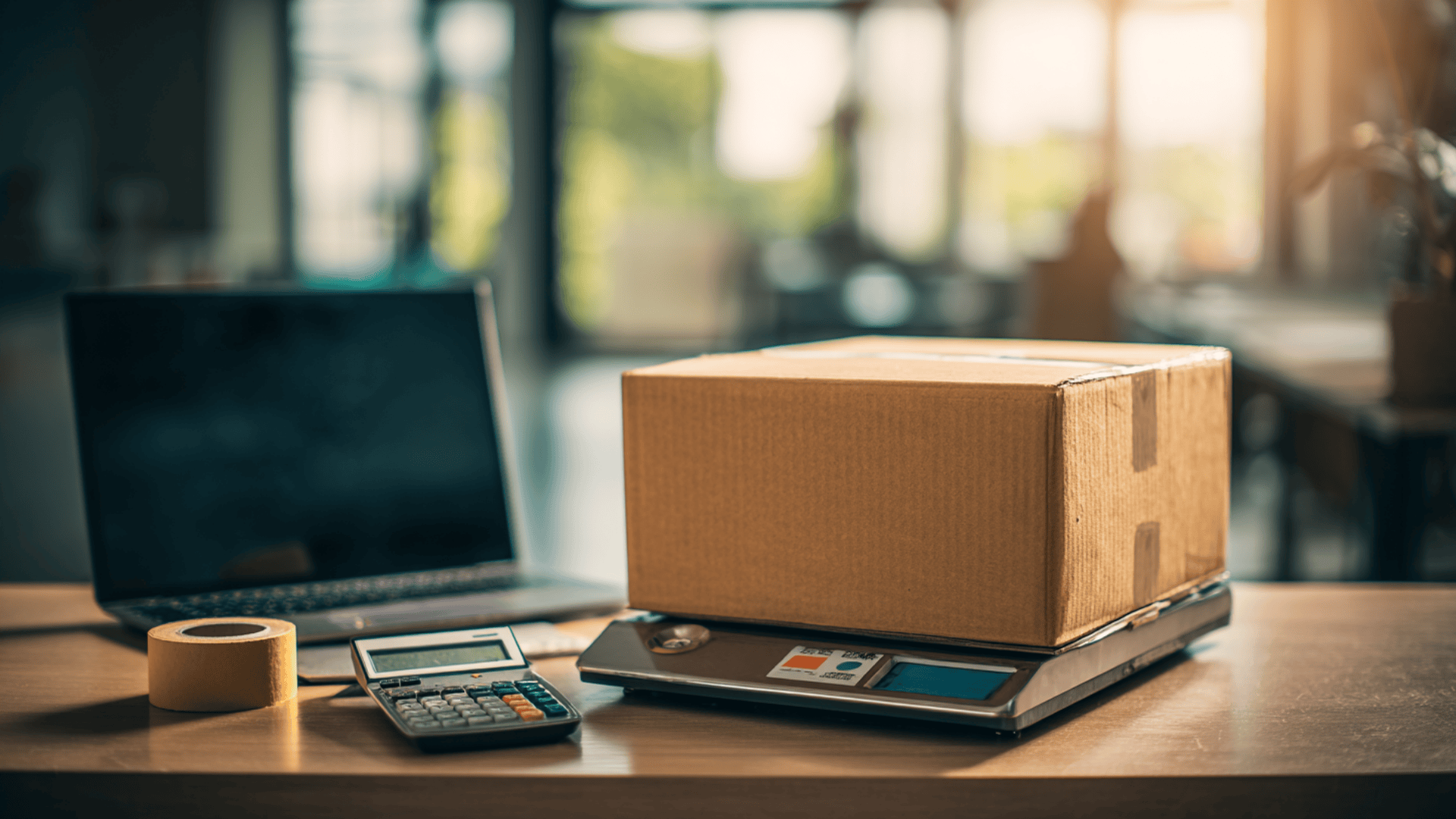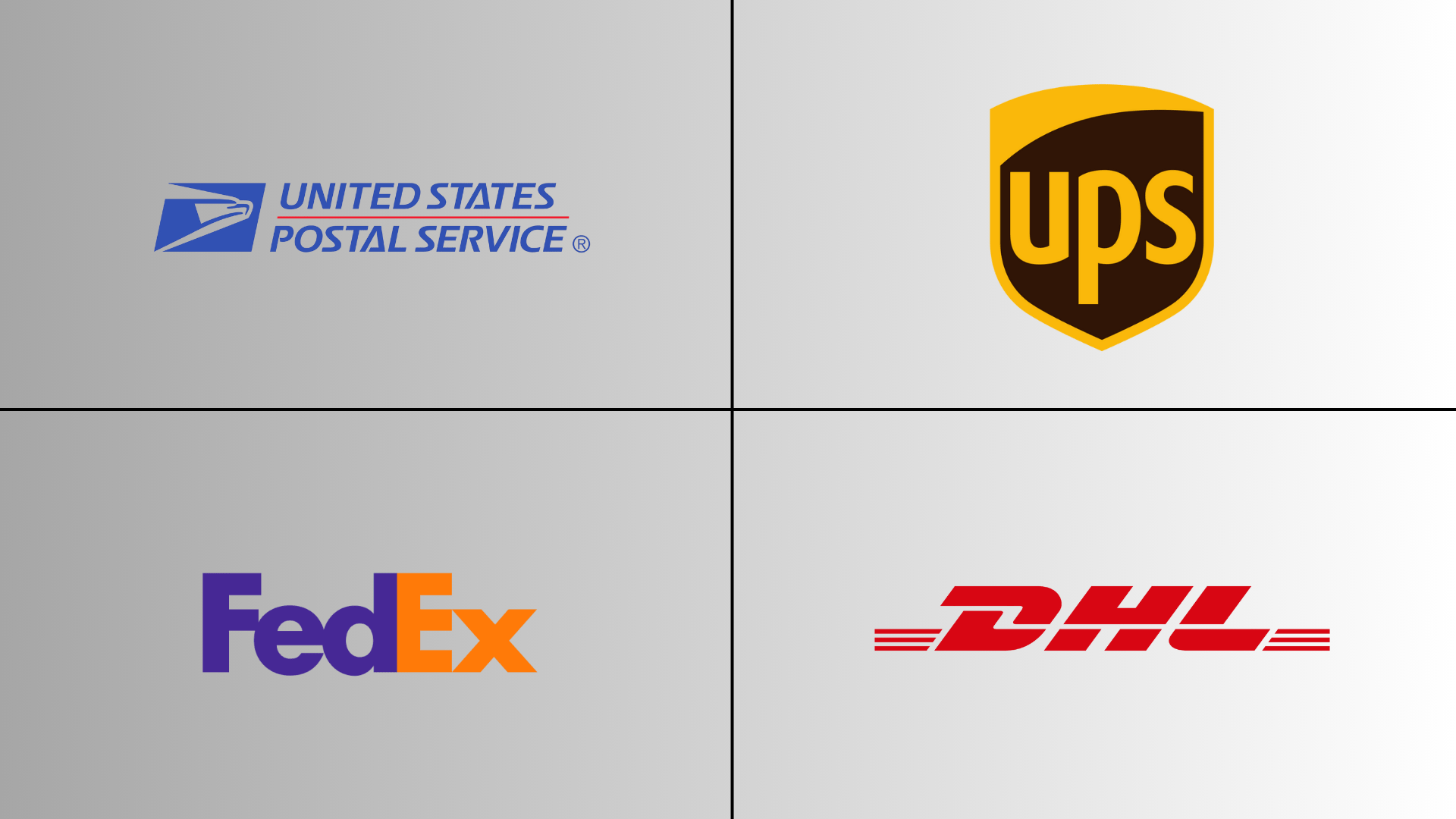Figuring out how to ship large items can feel intimidating, especially if you’ve never dealt with heavy or oversized packages before.
The truth is, shipping something big isn’t just about slapping on a label; it’s about balancing cost, protection, and convenience.
From experience, I know that the trick isn’t only choosing a carrier, but knowing which options make sense for your specific situation.
Today, I’ll show you how a little preparation up front can save you from broken items, unexpected fees, or wasted time. Once you understand the basics, the whole process becomes much easier.
Let’s start with the first step: deciding on the right shipping method for your item.
How to Ship Large Items the Right Way
The first step is figuring out if your item qualifies for parcel shipping or if it needs to go freight. I’ve found that once you decide this, the rest of the process feels much simpler. Choosing the right option upfront saves money and avoids surprises.
Parcel vs. Freight
Parcel shipping works best when your package is still within the standard carrier limits. UPS and FedEx will take items up to 150 pounds, with a maximum of 108 inches in length or 165 inches in combined length and girth.
USPS is stricter, capping out at 70 pounds and 108 inches long, or 130 inches total in length and girth. These services are great for heavy but manageable boxes, electronics, or sports gear.
Freight shipping steps in when your item is larger than those limits. Once you cross 150 pounds or have something bulky like furniture, freight is usually the smarter choice.
Items move on pallets and can be shipped by truck, air, or sea. It may look more expensive at first, but I’ve noticed freight often costs less than paying all the oversize fees carriers add on to parcels.
Domestic vs. International
Domesticshipping is usually straightforward. You can send large items across the country with UPS, FedEx, USPS, or DHL as long as you stay within their limits.
Internationalshipping is where things get more complex. You’ll need customs paperwork, and extra costs like duties and taxes can pop up. In many cases, freight companies or shipping brokers offer smoother handling for oversized international shipments.
From my experience, it’s worth using a platform that manages the paperwork and helps compare rates, because it saves both time and stress.
Easy Way to Choose Parcel or Freight
Below is a simple way to decide which method works best:
| Item Type | Weight/Size | Best Option |
|---|---|---|
| Box under 70 lbs, fits USPS limits | Small to medium | USPS |
| Box up to 150 lbs, under 165″ girth | Large parcel | UPS / FedEx |
| Oversized box (furniture, gym gear) | Over 150 lbs or bulky | Freight |
| International oversized item | Any weight | Freight / Broker service |
If you’re ever unsure, I’d suggest using a carrier’s online calculator. It shows you right away if your item qualifies for parcel shipping or if you should switch to freight.
Packaging Large and Heavy Items Safely
How you package big items can make or break the shipment. A weak box or poor padding risks damage and extra costs. Focus on these essentials:
- Box Selection: Choose a double-wall or reinforced box that can handle heavy weight. Avoid worn or bent boxes, since even small weaknesses can cause failure during shipping.
- Padding & Cushioning: Use bubble wrap, foam, or packing peanuts to create at least two inches of protection. For heavy or fragile items, layer the cushioning to prevent shifting inside the box.
- Sealing and Strapping: Seal every seam with heavy-duty packing tape, especially the bottom. For extra strength, strap the box with reinforced tape or bands to keep it from splitting open.
- Splitting Into Smaller Packages: Breaking oversized items into multiple boxes often lowers costs and makes handling easier. I’ve done this with exercise equipment, and it was both cheaper and more practical.
- Labeling Heavy Items: Packages over 70 pounds usually require a “Heavy” sticker. Even when not required, adding one alerts handlers and reduces rough treatment during shipping.
Good packaging keeps your item safe and helps you avoid costly mistakes. Once the box is secure, the next step is figuring out the actual shipping costs
Calculating Shipping Costs and Avoiding Surprises

One of the trickiest parts of shipping large items is figuring out what it will really cost. I’ve had times where I thought I was getting a deal, only to see extra fees tacked on later. Knowing how carriers calculate prices can save you a lot of stress.
1. Dimensional vs. Actual Weight
Carriers don’t just look at how much your package weighs on a scale. They also measure the size of the box and charge based on whichever number is higher; this is called dimensional weight.
A lightweight but bulky package can end up costing more than you’d expect. I always measure my box and compare it to the actual weight, so I’m not caught off guard.
2. Cost Calculators
Most major carriers, including UPS, FedEx, USPS, and DHL, have online calculators that make it easy to check prices before you ship. You plug in the size, weight, and destination, and they’ll give you a quote.
I like using these tools to compare rates side by side, since even a small difference in size or service can change the cost.
3. Cheapest Domestic Options
If you’re shipping within the U.S., ground services are usually the most budget-friendly. UPS Ground and USPS Ground Advantage often come in at the lowest price for heavier boxes. FedEx Ground is competitive too, especially for mid-size items.
From my experience, booking through online shipping platforms can shave a few extra dollars off compared to going directly to the counter.
4. Cost Examples for 50 lb and 100 lb Packages
To give you an idea, sending a 50-pound package across the country by UPS Ground usually runs around $70–$100, depending on the size of the box. A 100-pound package can push that number closer to $150 or more.
USPS will be cheaper if the box fits their limits, but once you cross into oversized territory, UPS and FedEx are often the better bet
Handling Tough Shipments: Special Situations
Not every large shipment fits the standard process. These are the cases where you’ll need to plan a little differently:
- International shipping: Oversized international shipments need customs forms, invoices, and duties. A broker or shipping platform makes the process smoother by handling paperwork and helping you avoid delays or extra fees.
- Oversized household goods: Furniture, appliances, and sports gear usually exceed parcel limits. Freight is best here. Palletizing items and adding liftgate service make loading easier, especially if you don’t have a dock.
- Fragile or awkward items: Electronics, artwork, and oddly shaped goods need extra padding. I use bubble wrap, foam, and “Fragile” labels, which help protect items and reduce rough handling during transit.
- Extra services: Carriers offer liftgate delivery for heavy pallets and white-glove service that includes setup. These options cost more, but they’re worth it when moving large or difficult items.
Tip: Compare parcel and freight before booking. I once shipped a couch and found freight cheaper than paying UPS oversize fees, plus it was handled more smoothly.
Comparing Shipping Carriers

Not all carriers handle large items the same way. Some are cheaper for heavy boxes, while others are better for oversized or international shipments. Here’s how they stack up:
| Carrier | Weight/Size Limits | Best For | Speed/Cost Notes |
|---|---|---|---|
| USPS | Up to 70 lbs, 108” length, 130” girth | Small–medium heavy boxes | Cheapest for under 70 lbs, slower for long-distance |
| UPS | Up to 150 lbs, 108” length, 165” girth | Heavy boxes and larger parcels | Reliable ground shipping, good tracking, oversize fees apply |
| FedEx | Up to 150 lbs, 108” length, 165” girth | Large/heavy boxes, business shipping | Competitive with UPS, faster express options |
| DHL | Up to 150 lbs for parcels, freight for larger | International shipping | Strongest for overseas, customs handling included |
| Freight (various) | Over 150 lbs or bulky items | Furniture, appliances, bulk | Best for oversized or awkward loads, costs vary by carrier |
| Platforms (uShip, brokers) | Depends on carrier | Furniture, household goods, international | Helps compare rates, often cheaper than booking directly |
When to Use Each Option
Use USPS for smaller heavy boxes under 70 pounds, since it’s usually the cheapest. UPS and FedEx are my go-to for large domestic parcels, especially when I want solid tracking.
DHL is the strongest choice for international shipments because it manages customs smoothly. For anything over 150 pounds, freight is the best route.
Specialized Services
Platforms like uShip and shipping brokers are especially useful for oversized household goods like furniture or gym equipment. They connect you with multiple carriers, so you can compare prices and find specialized services like white-glove or liftgate delivery.
Choosing the right carrier makes the difference between paying fair rates and getting stuck with oversize fees. Once you match your package to the right service, you’re ready to book and ship.
Shipping Large Items: Getting Your Package on Its Way
Once everything’s packed, it’s time to actually ship the item. I think of this part as three quick steps that make the whole process smoother.
Step 1: Buy Your Label Online: The cheapest way is almost always through a discount platform like PirateShip or ShipStation. They give you commercial rates that are lower than the counter price. You can print the label at home and stick it on right away.
Step 2: Choose Drop-Off or Pickup: If the item isn’t too bulky, dropping it off works fine. But for heavy or oversized packages, I usually schedule a pickup. UPS, FedEx, and USPS all offer this, and sometimes it’s even free.
Step 3: Add Extra Protection: Insurance is worth it when shipping something heavy or valuable. Tracking comes standard, but adding a signature requirement gives extra peace of mind. I’ve used it for anything that can’t be easily replaced.
That’s it, three quick steps, and your package is officially on its way.
Wrapping Up
Shipping large items doesn’t have to feel overwhelming when you know how to plan ahead. The key is thinking beyond just cost; look at handling, safety, and convenience.
I’ve noticed the smartest approach is treating each shipment as unique. A fragile painting, a heavy appliance, or an international delivery all call for slightly different strategies.
Choosing the right carrier is important, but so is packaging with care and considering add-ons like insurance or liftgate service. When you combine smart preparation with the right shipping method, you’ll save money and avoid headaches.
Want more practical tips for home, lifestyle, and everyday solutions? Check out my other blogs and keep learning smarter ways to handle life’s challenges.
Frequently Asked Questions
What is the largest size package I can ship with USPS?
USPS allows packages up to 70 pounds, 108 inches in length, or 130 inches in combined length and girth. Anything larger requires another carrier.
How much does a 50 lb package cost to ship?
A 50-pound package usually costs $70–$100 with UPS or FedEx Ground. Exact pricing depends on the box size, distance, and delivery speed.
How much to ship 100 lbs UPS?
Shipping a 100-pound box with UPS generally costs $150 or more. Prices vary by dimensions, service level, and whether it qualifies for freight.
How to ship a large item without a box?
If boxing isn’t possible, wrap the item securely in thick padding, then use shrink wrap, straps, or a pallet to keep it safe during transit.















